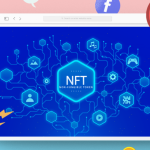
The Rise of Mobile Gaming: Redefining the Gaming Experience with Canvas API
- Post
- August 8, 2023
- Canvas API, Web APIs, Web Technologies
- 0 Comments
In today’s digital age, where smartphones have become an extension of ourselves, mobile gaming has soared to unprecedented heights. The fusion of cutting-edge technology and gaming has given birth to an era of immersive experiences. Among the innovations that have transformed this landscape, the Canvas API stands out as a pivotal force. This article delves into how the Canvas API is reshaping the realm of mobile gaming, ushering in a new era of interactive and captivating gameplay.
Introduction: A Glimpse into the Evolution of Mobile Gaming
The ever-evolving realm of mobile gaming has witnessed remarkable growth over the past decade. From simple pixelated games to complex, visually stunning masterpieces, the evolution has been nothing short of astonishing. A significant catalyst in this transformation has been the Canvas API, a web technology that enables dynamic, interactive graphics rendering directly within a web browser. As mobile devices become more powerful and internet connectivity more robust, the Canvas API has emerged as a potent tool for developers to create visually stunning and engaging gaming experiences.
The Canvas API: Unveiling its Power and Potential
Canvas API: A Window to Creativity
The Canvas API, part of the HTML5 specification, provides developers with a blank canvas to bring their creative visions to life. Unlike static images, the Canvas API allows for real-time rendering of graphics, animations, and even entire game scenes. This dynamic nature empowers game developers to craft experiences that adapt and respond to user interactions, enhancing player engagement and immersion.
Seamless Integration with HTML and JavaScript
At its core, the Canvas API seamlessly integrates with HTML and JavaScript, making it accessible to a wide range of developers. By leveraging familiar web technologies, developers can harness the power of the Canvas API to create rich gaming experiences without the need for specialized software or extensive learning curves.
Empowering Mobile Gaming with Interactivity
One of the key strengths of the Canvas API is its ability to offer a high degree of interactivity. Developers can implement features like touch controls, gesture recognition, and dynamic animations, transforming the player’s touchscreen into a versatile gaming interface. This level of interactivity bridges the gap between the virtual world and the player, resulting in a deeply engaging and immersive experience.
Canvas API in Action: Showcasing Innovative Examples
Dynamic Environments and Animations
Imagine a mobile game where the environment evolves in real-time based on player choices. The Canvas API makes this possible by allowing developers to create dynamic environments that react to player interactions. From lush forests that sway with the wind to intricate water simulations that respond to touch, the possibilities for creating captivating virtual worlds are endless.
Interactive Storytelling
Canvas API’s capabilities extend beyond gameplay mechanics. Developers can employ the Canvas API to weave interactive storytelling elements into their games. Players can become active participants in the narrative, making choices that influence the storyline’s progression. This fusion of gameplay and storytelling creates a truly personalized gaming experience.
Multiplayer Engagements
The Canvas API isn’t limited to single-player experiences. With its ability to render dynamic visuals and animations, it’s a natural fit for multiplayer games. Whether it’s a real-time strategy game or an action-packed multiplayer shooter, the Canvas API facilitates seamless synchronization of graphics and gameplay across devices, enabling players to engage in epic battles and cooperative challenges.
Canvas API and Performance Optimization: The Winning Combination
Efficient Resource Management
Mobile devices come with their own set of limitations, such as processing power and memory constraints. The Canvas API’s resource-efficient approach plays a crucial role in ensuring optimal performance on a variety of devices. By efficiently managing graphical resources, the API enables developers to create visually impressive games without compromising on performance.
Reduced Latency, Enhanced Responsiveness
Latency can be the nemesis of enjoyable gaming experiences. The Canvas API’s real-time rendering capabilities contribute to reducing latency, resulting in smoother animations and more responsive controls. This enhanced responsiveness is a game-changer in competitive gaming scenarios, where split-second decisions can determine victory or defeat.
Final Words: Shaping the Future of Mobile Gaming
In a world where mobile devices have become ubiquitous, the Canvas API emerges as a groundbreaking force that’s revolutionizing the mobile gaming landscape. With its ability to deliver dynamic, interactive graphics and seamless integration with web technologies, the Canvas API empowers developers to craft immersive and engaging gaming experiences that captivate players worldwide. As technology continues to evolve, we can only anticipate even more astonishing feats from the marriage of Canvas API and mobile gaming.
Commonly Asked Questions
1. How does the Canvas API enhance mobile gaming?
The Canvas API transforms mobile gaming by providing developers with a platform to create dynamic, interactive graphics and animations. This enhances player engagement and immersion, resulting in captivating gameplay experiences that respond to user interactions.
2. Is the Canvas API suitable for multiplayer games?
Absolutely. The Canvas API’s real-time rendering capabilities make it an ideal choice for multiplayer games. It enables seamless synchronization of graphics and gameplay across devices, facilitating multiplayer engagements and cooperative challenges.
3. Can the Canvas API optimize performance on mobile devices?
Yes, the Canvas API plays a significant role in optimizing performance on mobile devices. Its resource-efficient approach and reduced latency contribute to smoother animations, enhanced responsiveness, and optimal gameplay experiences.
4. What role does interactivity play in Canvas API-powered games?
Interactivity is a cornerstone of Canvas API-powered games. Developers can implement touch controls, gesture recognition, and dynamic animations, bridging the gap between the virtual world and the player. This level of interactivity leads to deeply engaging and immersive gaming experiences.
5. How does the Canvas API revolutionize storytelling in games?
The Canvas API enables developers to integrate interactive storytelling elements into games. Players become active participants in the narrative, making choices that influence the storyline’s progression. This fusion of gameplay and storytelling results in personalized and compelling gaming experiences.




